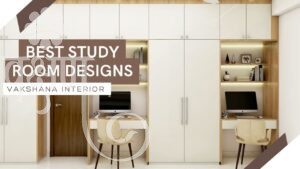Divine Design: 10 Tips for Creating Beautiful Interiors At Home
Divine Design: 10 Tips for Creating Beautiful Interiors At Home
Gorgeous Home interior design isn’t just for the lucky few with bottomless pockets and personal decorators. With the right insight and approach, anyone can transform their living space into a picture-perfect home. In this comprehensive guide, we’ll take a deep dive into creating home interiors that are not just aesthetically pleasing but also functional and reflective of your unique style.
Each room in your house can be a canvas, and you, the artist, can layer it with textures, colors, and furniture to produce a masterpiece that is your home. Ready to make your interior design dreams a tangible reality? Let’s begin with some foundational principles to set the scene for a beautiful space.
1. Define Your Aesthetic – Home Interior
Before you pick up a paintbrush or move a single piece of furniture, it’s critical to establish the aesthetic that speaks to you. Do you fancy the minimalist charm of Scandinavian design, the opulent layering of traditional styles, or the edgy appeal of industrial interiors?
Consider creating a mood board to gather inspiration from magazines, online platforms, and even your own surroundings. This collage of styles will help you pinpoint your preferences and guide your choices as you start curating your space.
2. The Power of Color – Beautiful Homes Interior
Color is one of the most influential elements in interior design. It can evoke emotions, alter perceptions of space, and set the mood for your home. When selecting colors, think about context – how light and shadow will interact with your chosen palette and how adjoining rooms relate to one another.
In general, light colors can make a space feel larger and airier, while dark tones can add warmth and intimacy. Remember, it’s not just about the walls; color should flow through the room with consideration for the ceiling, floor, and furnishings.
3. The Play of Textures
Textural contrast is the spice of an engaging interior. Smooth and rough, soft and hard, shiny and matte – each has its role in enriching the sensory experience of a room. Use a mix of textures to bring visual interest and depth to your space.
Consider a plush rug over hardwood floors, a chunky knit throw on a leather sofa, or a polished concrete wall against a velvet-upholstered bed. These subtle contrasts can make your home feel more dynamic and inviting.
4. Scale and Proportion
It’s crucial that the pieces in your room not only fit physically but also feel right relative to one another. Oversized furniture in a small room can make it feel cramped, while tiny accents in a large space might get lost.
Think about the scale of each item concerning the space it’s in and the other elements around it. Creating a floor plan before making any significant purchases can help ensure you achieve the right balance.
5. Lighting Design
Great lighting can elevate the beauty of any room. Consider three types of lighting in your design scheme: ambient (general illumination), task lighting (for activities like reading or cooking), and accent lighting (to highlight features or create a mood).
Natural light is the ultimate goal, so make sure to optimize windows with drapery that can be adjusted throughout the day. Supplement with beautiful fixtures that complement your space and needs.
See more: Best Modern Farmhouse Decorating Style | Types Of Curtain Fabric
6. Furniture Arrangement
Your furniture layout can define the functionality and flow of a room. Start by designing for function – what activities will take place in the space? A living room might center around conversation, so arrange seating to encourage face-to-face contact.
Don’t push all your furniture against the walls either; a bit of breathing room can make a space feel more inviting. Use area rugs and lighting to create ‘zones’ in an open floor plan.
7. Personalize with Art and Décor
Now it’s time to layer in the personal touches that give your home character. Don’t be afraid to showcase items that have meaning to you, from family heirlooms to travel souvenirs.
Art is a powerful tool for personalization. Invest in pieces that resonate with you – they’ll be the soul of your space. Strategically placed, art can also guide the eye and punctuate the design.
8. Upcycling and DIY Projects
Creating a beautiful interior doesn’t have to mean breaking the bank. Upcycling old furniture, crafting your own décor, or even repurposing what you already have can be both budget-friendly and full of charm.
Scour thrift stores for unique pieces, or give a beloved item a new lease on life with a fresh coat of paint. DIY projects tap into your creativity and ensure that your space is entirely one-of-a-kind.
9. Environmentally Conscious Choices
The beauty of your home should not come at the expense of the environment. Opt for sustainable or repurposed materials wherever possible, and choose paints and furnishings that are low in volatile organic compounds (VOCs).
Consider investing in pieces made by local artisans or ethical brands. These items not only have a story to tell but also support your local community and minimize the carbon footprint of shipping.
Visit here: what is an island kitchen | False Ceiling Design For Home
10. Continuous Curating
The final tip is an ongoing one. Interior design is not a set-it-and-forget-it endeavor; it’s a process of continuous refinement. As you live in and experience your space, you’ll find what works and what doesn’t.
While it’s important to be deliberate in your design choices, don’t be afraid to change things up. Your home is a living, breathing space that should evolve with you – and that’s the true essence of interior beauty.
Following these tips, you’re well on your way to creating an interior that’s not just aesthetically pleasing, but a reflection of your personal taste and lifestyle. With a little bit of creativity and a touch of conscientiousness, your home can be a beautiful sanctuary that tells your unique story. So go ahead, start designing! No matter what style you choose, remember to have fun and make it your own. Happy decorating! Continuously finding inspiration and sources of creativity can also help keep your home feeling fresh and inviting. Stay updated on design trends, attend local art shows or exhibitions, and don’t be afraid to try new things in your space.
Additionally, don’t overlook the power of decluttering and organizing. A clutter-free space not only looks better but also has a positive impact on your mental well-being. Regularly reassessing and editing your belongings can help maintain a sense of harmony in your home.
Finally, don’t be afraid to seek professional help if needed. Hiring an interior designer can provide valuable expertise and assist in bringing your vision to life. Remember, creating a beautiful and functional interior is an ongoing process, so don’t be afraid to ask for help or make changes along the way. Enjoy the journey of designing your perfect space!
Happy decorating! Continuously finding inspiration and sources of creativity can also help keep your home feeling fresh and inviting. Stay updated on design trends, attend local art shows or exhibitions, and don’t be afraid to try new things in your space.
Additionally, don’t overlook the power of decluttering and organizing. A clutter-free space not only looks better but also has a positive impact on your mental well-being. Regularly reassessing and editing your belongings can help maintain a sense of harmony in your home





